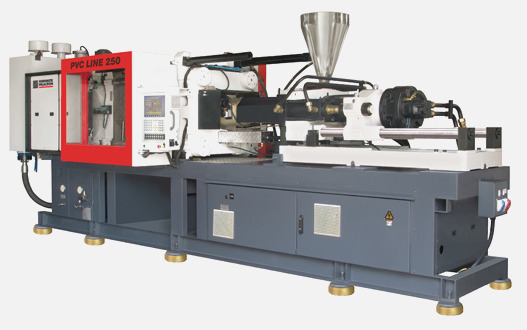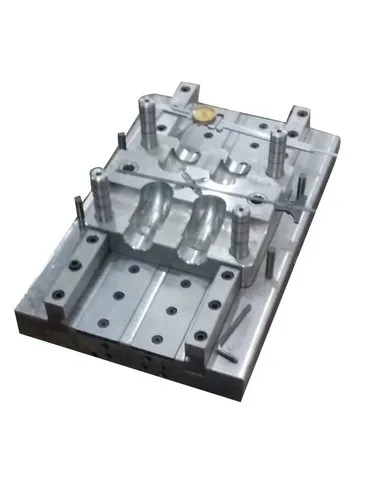
PVC (Polyvinyl Chloride) injection molding is a manufacturing process used to create parts and products from PVC material through the injection of molten plastic into a mold cavity. This method is widely used due to its efficiency, precision, and ability to create complex shapes with high repeatability. In this guide, we will walk through the step-by-step process of PVC injection molding.
1. Understanding PVC Injection Molding
PVC injection molding involves melting PVC plastic pellets and injecting the molten material into a mold under high pressure. After cooling and solidifying, the mold is opened, and the finished part is ejected. The process is highly versatile and can be used to produce a wide range of products, from simple components to complex, intricate parts.
2. Materials Used in PVC Injection Molding
PVC comes in two primary types:
- Rigid PVC: Used for creating stiff and solid parts like pipes, fittings, and medical devices.
- Flexible PVC: Used for making products like tubing, gaskets, and electrical cables, which require more flexibility.
Other additives such as plasticizers, stabilizers, and colorants are mixed with the base PVC to adjust properties like flexibility, strength, and color.
3. The Injection Molding Process
The injection molding process involves several key steps:
Step 1: Material Preparation
PVC resin pellets are dried to remove any moisture. This step is crucial because excess moisture can affect the quality of the final product, causing defects such as bubbles or voids in the molded part. The material is typically fed into a hopper connected to the injection molding machine.
Step 2: Heating and Melting
The PVC pellets are heated in the barrel of the injection molding machine until they reach a molten state. The temperature is carefully controlled to ensure proper flow and consistency. The barrel is divided into heating zones to maintain a gradual increase in temperature, ensuring even melting.
Step 3: Injection
Once the PVC material has been melted, it is injected into the mold cavity under high pressure. The mold is designed to shape the material into the desired part. The injection is controlled by the machine’s screw, which also helps to mix and feed the molten PVC into the mold evenly.
Step 4: Cooling and Solidification
After the molten PVC has been injected into the mold, it is cooled rapidly using a cooling system in the mold itself. This cooling phase solidifies the plastic, causing it to take the shape of the mold cavity. The cooling time is critical to ensure the part maintains its shape and strength.
Step 5: Mold Opening and Ejection
Once the part has cooled and solidified, the mold is opened, and the part is ejected from the cavity. Depending on the complexity of the part, ejection mechanisms such as pins or air blasts are used to remove the part without causing damage.
Step 6: Post-processing
After the part is ejected, it may undergo additional processes such as trimming, polishing, or quality checks. Excess plastic, known as flash, might be removed from the part. The part is then ready for final inspection or packaging.
4. Key Considerations in PVC Injection Molding
- Mold Design: The design of the mold plays a crucial role in the quality of the final product. Proper venting, cooling channels, and parting lines are essential to avoid defects.
- Temperature Control: Maintaining the correct temperature during injection and cooling is critical for optimal material flow and part quality.
- Injection Pressure: The amount of pressure applied during the injection step can affect the fill rate, surface finish, and the integrity of the part.
- Cycle Time: The time taken to complete one injection molding cycle (from injection to ejection) should be optimized for efficiency and productivity.
5. Advantages of PVC Injection Molding
- High Precision: Injection molding allows for high-precision parts with tight tolerances.
- Complex Geometries: Intricate shapes and designs can be easily achieved with injection molding.
- Efficiency: The process is fast and can produce large volumes of parts in a short period.
- Material Versatility: PVC offers a variety of material properties, such as flexibility or rigidity, which can be tailored to suit specific needs.
- Cost-Effective for Mass Production: The high setup costs are offset by the low cost per unit when manufacturing large volumes of parts.
6. Applications of PVC Injection Molding
PVC injection molding is used in a wide variety of industries and applications:
- Medical Industry: Medical devices, tubes, and fittings.
- Automotive: Components like dashboards, door panels, and electrical connectors.
- Construction: Plumbing pipes, fittings, and electrical conduit.
- Consumer Goods: Toys, housewares, and packaging.
- Electronics: Connectors, casings, and housings.
7. Challenges in PVC Injection Molding
- Material Sensitivity: PVC is sensitive to temperature fluctuations, and improper handling can lead to defects.
- Part Warping: Uneven cooling or improper mold design can cause parts to warp or deform.
- Environmental Concerns: PVC has environmental concerns due to its chlorine content, especially when incinerated. Therefore, recycling and disposal practices must be carefully considered.
8. Conclusion
PVC injection molding is a versatile and efficient manufacturing process that allows for the creation of high-quality plastic parts in large volumes. Whether you are producing medical devices, consumer goods, or automotive parts, understanding the key steps in the injection molding process and the factors that affect it is crucial for success. By carefully considering the material properties, mold design, and process parameters, manufacturers can optimize their production for cost, quality, and efficiency.

